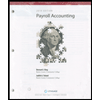
Introduction: To operate a business, a taxpayer generally chooses between individual trading,
To choose: Any corporate AMT credit carried forward that existed at the end of 2017.
Want to see the full answer?
Check out a sample textbook solution
Chapter 11 Solutions
Income Tax Fundamentals 2020
- Can you solve this general accounting problem with appropriate steps and explanations?arrow_forwardPlease provide the solution to this general accounting question using proper accounting principles.arrow_forwardOn January 1, 2018, Sycamore International reports net assets of $1,245,000, although machinery (with an eight-year life) having a book value of $720,000 is worth $840,000 and an unrecorded trademark is valued at $75,600. Teton Group pays $1,140,000 on that date for a 90 percent ownership in Sycamore. If the trademark is to be written off over a 15-year period, at what amount should it be reported on the consolidated statements on December 31, 2020?arrow_forward





